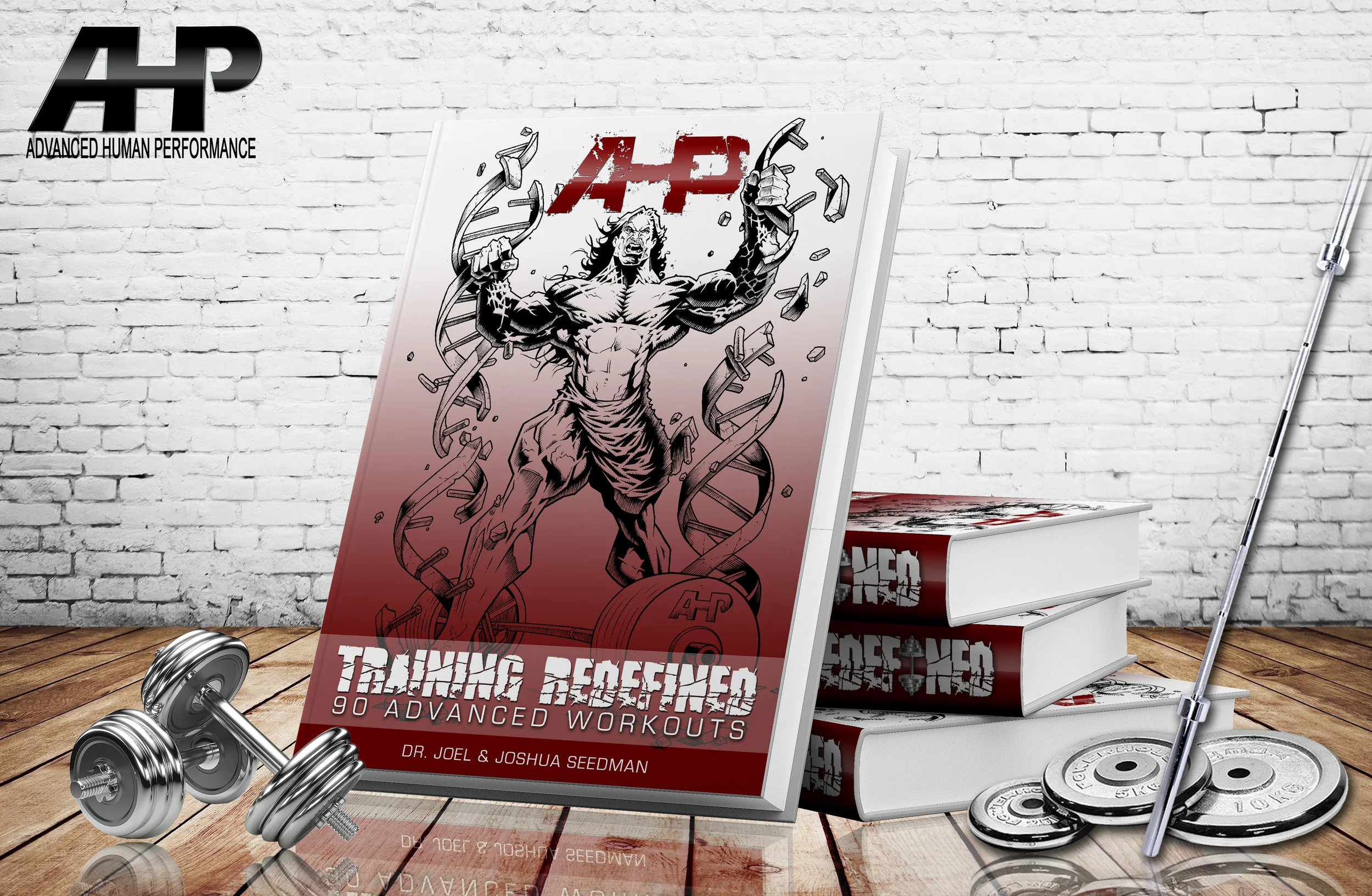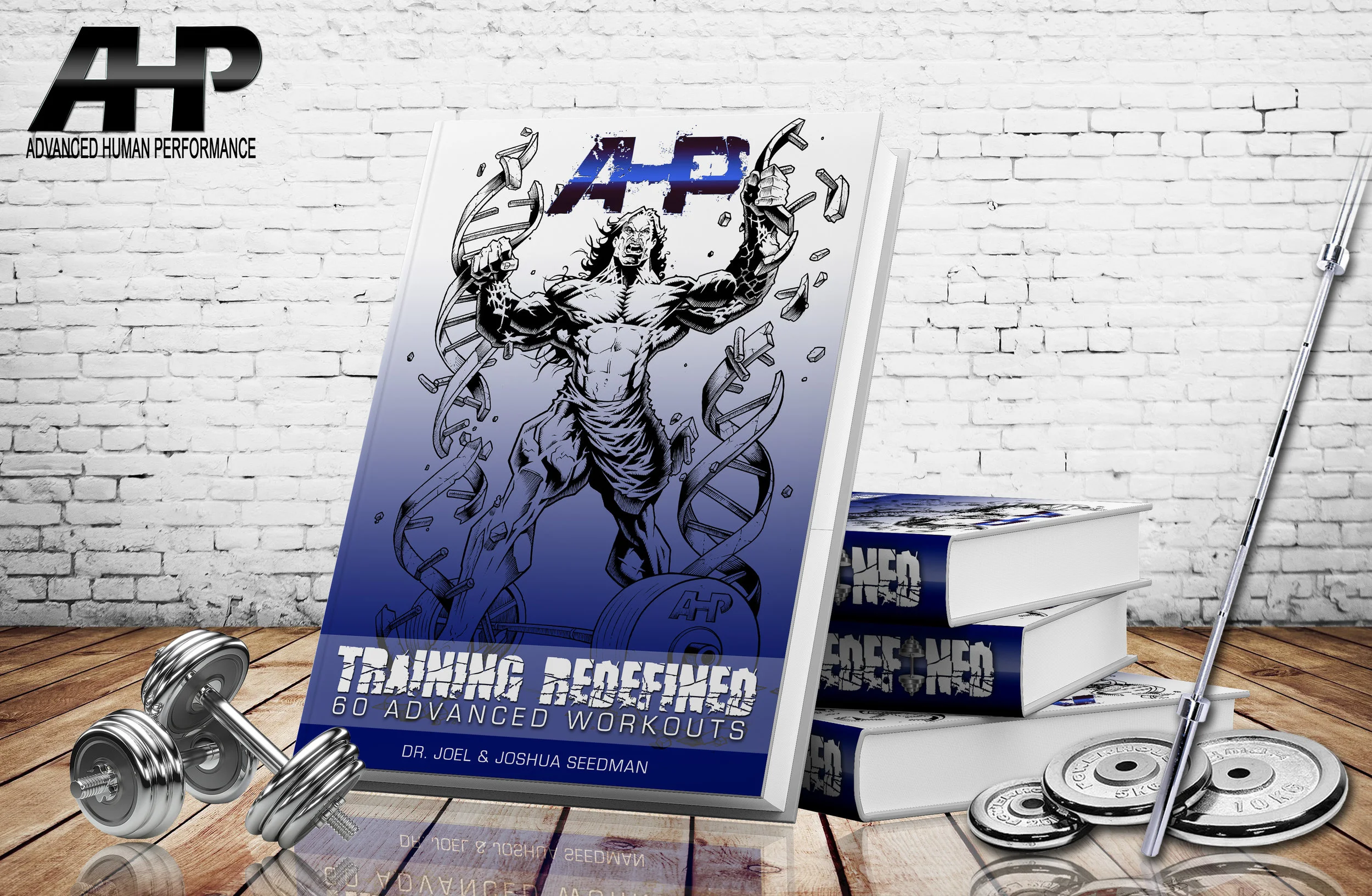The Squat Everyone Can & Should Do
Dr Joel Seedman, Ph.D.
Although I use a variety of squats and lower body drills with my clients particularly eccentric isometric variations on traditional moves, there’s one squat variation I tend to use with just about every client due to its simplicity and effectiveness. It’s what I refer to as the front curled squat. Essentially you’re holding either dumbbells or a barbell in the top of a bicep curl position and performing squats. Yes, it’s that simple.
Here are 10 variations demonstrated by some of my awesome athletes and clients including NFL athlete Vantrell McMillan, NFL athletes Prince Iworah and CJ Okpalopi, NPC figure competitor Leslie Petch, NFL quarterback Taylor Heinicke, Eric McIntyre, bodybuilder Ben Lai, and MLB pro baseball player Austin Meadows, Rami Baghdadi, Ike Onike, and me in the final variation.
With that said the front curled squat and variations thereof provide 7 unique benefits over other squat variations particularly when combined with the eccentric isometric protocol. Learn more about eccentric isometrics here.
1. As previously alluded to the front curled squat is probably the single most simple and user friendly squat I’ve ever used so much so that just about every athlete and client I work with will have these incorporated into their routine in some form or another.
2. Although the effects are similar to a goblet squat, the front curled squat tends to be more conducive for maintaining optimal t-spine, shoulder, and neck mechanics. That’s because the arms can spread apart naturally (emphasizing external rotation of the shoulders) rather than feeling overly crowded (oftentimes contributing to internal rotation) as they would be if you were holding a single dumbbell with a close grip. Additionally as the load gets heavier with goblet squats, the bulky nature of the dumbbell tends to feel quite awkward. This is a non-issue with the front curled squat due to the more natural position of the dumbbells.
3. The front curled squat is also incredibly similar to a front rack kettlebell squat. While the front rack kettlebell squat is one of my personal favorite squatting variations, some individuals tend to find them very awkward as they do involve a moderate learning curve. The front curled squat on the other hand doesn’t have these issues as they’re very conducive for every level of athlete with little or no learning curve involved.
4. One of the most common statements every athlete will make after first performing the front curled squat is how intense they were not only on the legs but also the core and upper body as the shoulders, biceps, upper back, abs, and entire lower body get crushed.
5. Few gyms have dumbbells that exceed 100 lbs. As a result stronger athletes tend to struggle overloading the goblet squat. The front curled squat on the other hand has no such loading limitation unless of course you can easily hold two 100 pound dumbbells in each hand and squat with perfect mechanics. Read more about overloading goblet squats here.
6. Similar to the goblet squat or front rack squat the front curled squat reinforces a more upright torso position and punishes the lifter if they excessively bend over at the waist. However, the front curled squat requires even more precise form as it’s incredibly unforgiving and will punish even the slightest bit of excessive forward tilt. Essentially this will cause the dumbbells to get yanked down and out of position. That’s because an excessive forward tilt with the front curled squat places extreme tension on the relatively small biceps muscles causing them to give out if there’s too much tension. The goblet squat or front rack squat on the other hand aren’t quite as unforgiving thereby allowing the lifter to get away with subtle form aberrations.
7. The front curled squat is perhaps the single most versatile squat variation as the various modifications make it suitable for loading in a single arm or single leg fashion as well as lunges and Bulgarian squats, not to mention the use of barbells or dumbbells. The use of barbells also makes the implementation of accommodating resistance quite simple and effective while also allowing for near limitless loading capabilities.
Jumping Variations
Want to improve your jumping & landing mechanics? Try these single leg front curled skater squat jumps with the eccentric isometric protocol as I have 2 NFL athletes & GSP sponsored pros Taylor Heinicke & Julian Williams doing here.
The same benefits discussed above also apply to jumps. In fact because of the intense full body tension, core activation, & spinal rigidity produced from the front curled protocol this has a tremendous benefit for both jumping & landing mechanics. Essentially it reinforces the idea of staying tight, eliminating energy leaks, & optimizing motor control all of which are critical for knowing how to control power production & force absorption.
The single leg squat protocol as shown here also helps address imbalances & asymmetries between sides while simultaneously working on foot & ankle mechanics (one of the most neglected components of training). You’ll also notice how few if any of my athletes ever wear normal athletic shoes. That’s because barefoot conditions help optimize foot & ankle mechanics thereby improving activation up the kinetic chain. Read more in my ULTIMATE Foot & Ankle Manual.
Lastly the eccentric isometric protocol is something I use for 90% of more of all exercises with every one of my athletes and clients as it’s the single most effective training protocol I’ve ever used for improving athletic performance, functional strength, size, joint health, & body mechanics. That’s because the emphasis on the eccentric phase helps wake up proprioceptive mechanisms of the body which in turn helps the lifter fine-tune their body mechanics & master their movement. Learn more about eccentric isometrics + 30 eccentric isometric training routines in my new book MOVEMENT REDEFINED .
Trap Bar Front Curled Squat
If the supinated (underhand) front curled position places too much strain on the wrists or if you’re simply looking for a more core and forearm dominant version of the front curled squat try these hammer grip front curled squats with the trap bar as my awesome physique athlete Eric McIntyre shows here.
Besides absolutely torching the biceps, forearms, upper back, shoulders, and core these also reinforce very strict 90 degree squat mechanics (optimal squat ROM). That’s because it’s almost impossible to collapse and go past 90 deg as the trap bar bar will end up hitting your legs. Your biceps also get crushed as you’ll be flexing the daylights out of them to keep the trap bar from collapsing to your thighs, forcing you to maintain maximal bicep activation in the contracted position (a strong hypertrophy stimulus).
Because of the biomechanically disadvantageous leverage involved with holding the trap bar in front of you, too much momentum on the eccentric makes it feel like you’ll lose control of the bar and be unable to keep your arms flexed. This literally forces the athlete to use an eccentric isometric protocol (when using heavy weight) in order to avoid having the momentum pulling your arms down. Read more about eccentric isometrics in my book MOVEMENT REDEFINED.
Lastly, as previously mentioned the effects are quite similar to a goblet squat although the core gets taxed to a greater extent on these since the load is further in front of the center of mass. However, another benefit these have over goblet squats is the wider neutral grip which not only blasts the upper back but also reinforces sound posture.
What About The Lack of 90 Degree Angles at The Elbow??
Many will question why the elbow joint of the upper arm is bent past 90 degrees appearing to break the 90 degree principle. Here's why going past 90 degrees with the arm on the front curled squat is acceptable.
Essentially for the front curled squat position for the arms, this must be thought about in a similar fashion as a front rack position (front squat) or barbell rack (back squat) or kettlebell rack position where the individual is basically using their own body structure (elbows resting into their armpits). They’re not relying solely on their muscles to support the load at this point. Additionally because they’re not moving the limb/arm through a series of repeated eccentric-concentric contractions but rather just holding that position similar to a resting/racked position there’s usually very few if any issues for most folks.
Additionally the arms are held in such a fashion that they are perpendicular to the ground which would be impossible if the arms were kept at 90 (they would be angled and fighting gravity. In other words you’re using the integrity and strength of the radial and ulna bones to help hold it. Furthermore this position involves less muscle fatigue than if you were trying to rely solely on your own muscles to hold it. Simply put, the front rack position does not follow the same principle as most movements when it comes to the 90 degree principle.































